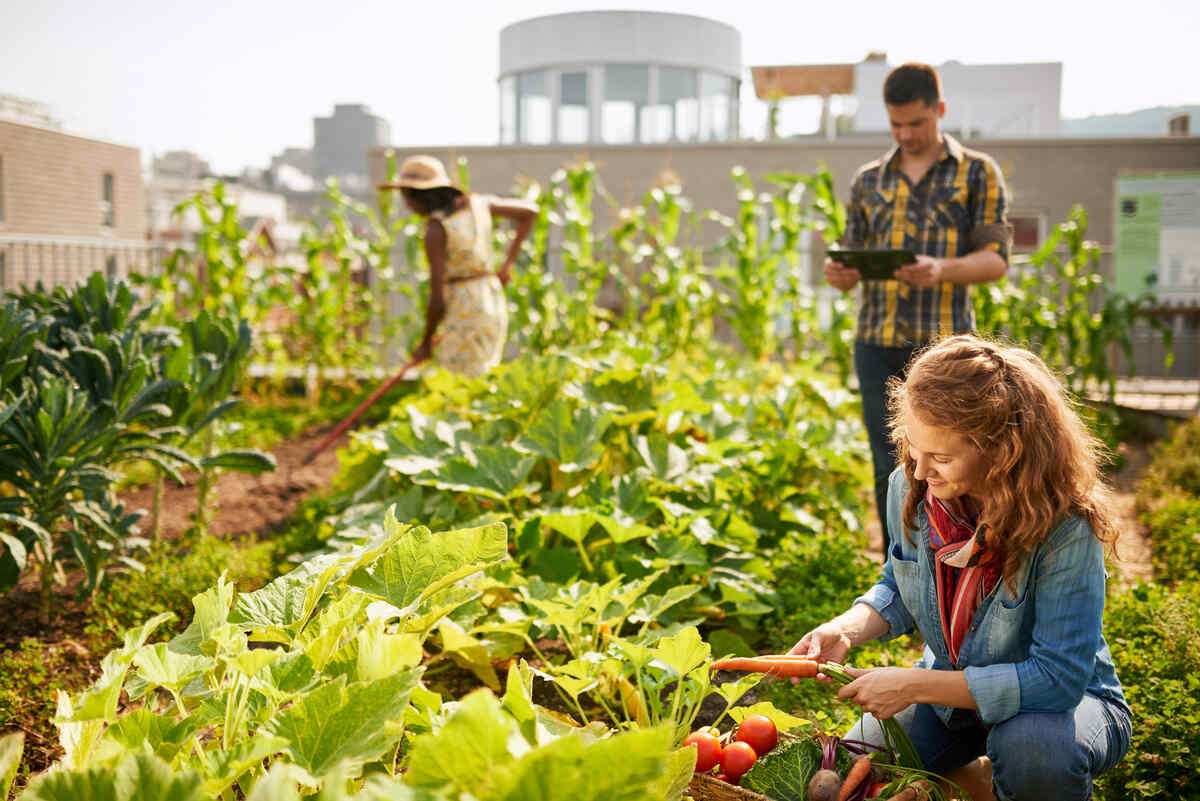The Ultimate Guide To City Blooming
The Ultimate Guide To City Blooming
Blog Article
The Definitive Guide for City Blooming
Table of ContentsFacts About City Blooming RevealedThe 9-Second Trick For City BloomingSome Known Questions About City Blooming.Some Ideas on City Blooming You Should KnowThe Of City Blooming
Intrigued in growing food to buy in the City of Chicago? Thinking regarding beginning a neighborhood garden? Changes to the Chicago Zoning Statute enable farming usages like area yards and urban farms in many components of the city. Below is a listing of frequently asked questions pertaining to the regulations and regulations that farmers ought to take into consideration when intending an urban agriculture job.
The zoning amendment does not modify any various other codes taking care of composting, structure licenses, purchasing or renting City had home, service licenses or environmental contamination. There are existing codes that control these problems and they remain in full result and may be suitable to your task. Neighborhood gardens are commonly owned or managed by public entities, public companies or community-based companies and kept by volunteers.
Urban farms expand food that is meant to be marketed, either on a nonprofit or for-profit basis. As a result of their business function, city ranches call for a business license. Yes. A neighborhood yard is allowed to offer surplus produce that was grown on site if the sales are accessory or subservient to the garden's primary function defined above.
Getting My City Blooming To Work
The quantity of garden compost product can not exceed 25 cubic backyards at any kind of offered time according to the requirements in 7-28-715 of the City's Municipal Code. Due to the fact that the dirt at the majority of brand-new yard websites requires changing, garden compost, soil, timber chips, or various other materials can be gotten to construct or enhance the expanding room.

If a building authorization is needed then the hoophouse will be thought about an accessory structure. You can find out more about the building authorization requirements by calling the Department of Buildings. The 25,000-square-foot size limit is meant to stop a single neighborhood yard from controling a given block or diminishing the block's existing residential or business character.
The restriction does not apply to yards situated in Public Open Space (POS) areas. Can there be more than one neighborhood garden that is 25,000 square feet on a single block? Fencing is not required, however, gardens that have big car parking locations might be required to mount fence or other landscape design features.
Examine This Report on City Blooming
B1 & B2 areas need that all industrial usage tasks be conducted inside your home. Is secure fencing needed for city ranches? Fencings may be required, along with landscape design and screening, for particular auto parking locations and exterior job or storage locations depending on area and the details task taking area.
Urban farms require building permits and zoning authorizations prior to building (indoor plants). Other forms of city review might be called for depending on certain structures, tasks, dimension, landscape design, licensing, public health and stormwater management issues.
Yes. The kind of certificate is identified by what is happening at the website. The Department of Service Affairs and Consumer Defense can aid figure out the specific sort of service license that's called for. Yes. Off road vehicle parking is required for many business projects in Chicago. The called for variety of garage is based on the variety of employees dealing with site and not the square footage of the growing area.
Examine This Report on City Blooming

Yes. A city ranch can offer garden compost product generated on website, nevertheless, the operation needs to abide by the laws in 7-28-715 of the Chicago Municipal Code. Yes. Aquaponic systems are allowed inside on metropolitan farms in lots of zoning areas. A zoning testimonial and structure authorization is called for in order to set up frameworks or systems and a service certificate is required as explained over.
As much as 5 hives or nests of honey may be maintained as an accessory use. Beekeepers should sign up with the Illinois Division of Farming. To learn more regarding the recommended zoning modification you may call the Department of Housing and Economic Growth, Bureau of Planning and Zoning at 312.744.8563.
Farming in cities and metropolitan locations A city ranch in Chicago. Urban farming refers to various techniques of growing. https://www.topratedlocal.com/city-blooming-reviews, processing, and distributing food in metropolitan locations. The term likewise relates to the area tasks of pet husbandry, aquaculture, beekeeping, and cultivation in a metropolitan context. Urban agriculture is differentiated from peri-urban farming, which occurs in backwoods at the side of suburban areas.
Some Known Factual Statements About City Blooming
It can entail an activity of natural farmers, "foodies" and "locavores", that look for to create social media networks based on a shared ethos of nature and area holism. These networks can develop by way of official institutional support, becoming incorporated into neighborhood town planning as a "shift community" motion for lasting city development.
In either case, the extra straight accessibility to fresh veggie, fruit, and meat products that might be become aware via metropolitan farming can enhance food protection and food safety and security while reducing food miles, causing lower greenhouse gas exhausts, thus adding to climate change mitigation. Several of the first evidence of urban farming comes from Mesopotamia.
Report this page